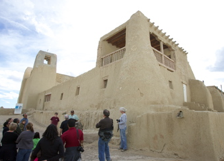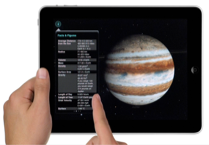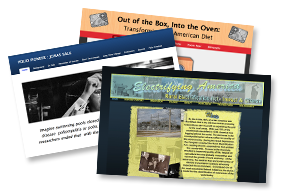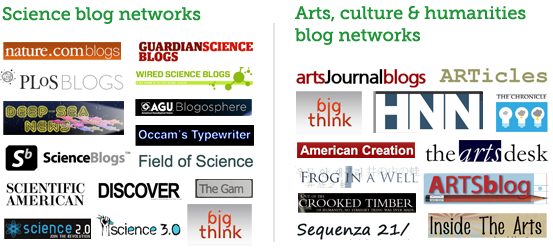Community Embraces New Word Game at Mid-Year Play Day This past Sunday, families at Takoma Park’s Seventh Annual Mid-Year Play Day had the opportunity to experience OtherWordly for the first time. Our educational language game drew curious children and parents to our table throughout the afternoon. Words in Space Several children gathered around our iPads […]
Read moreCategory: Business
 Museums are going mobile, and many companies are eager to help. At yesterday’s Museums & Mobile 2011 online conference, several vendors promoted their wares. This is a summary of products, approaches, and some alternatives… (more…)
Museums are going mobile, and many companies are eager to help. At yesterday’s Museums & Mobile 2011 online conference, several vendors promoted their wares. This is a summary of products, approaches, and some alternatives… (more…)
 Walking over rough sandstone blocks, between adobe houses, our $20/person tour wove through the streets and alleys of a small village atop a mesa in the Acoma Pueblo, in New Mexico.
Walking over rough sandstone blocks, between adobe houses, our $20/person tour wove through the streets and alleys of a small village atop a mesa in the Acoma Pueblo, in New Mexico.
The tour culminated in the local church (at right), the San Esteban del Rey Mission, which is a source of great pride, and also a symbol of Catholic persecution of traditional peoples. The earthen walls are many feet thick, and the roof is supported by centuries-old logs. (more…)

The term “strategic communications” has become popular over the last two decades. It means infusing communications efforts with an agenda and a master plan. Typically, that master plan involves promoting the brand of an organization, urging people to do specific actions, or advocating particular legislation.
It can refer to both a process, and to a specific job title.
 Small differences have a big effect when trying to coax thousands or millions of people. This includes urging online readers to take an action. This post looks at how IDEA used small ads on one of our projects (a small, free web-based exhibit about Daylight Saving Time) to promote another project (a 99¢ app about Daylight Saving Time sold via the Apple app store). This post looks at statistics and ratios… (more…)
Small differences have a big effect when trying to coax thousands or millions of people. This includes urging online readers to take an action. This post looks at how IDEA used small ads on one of our projects (a small, free web-based exhibit about Daylight Saving Time) to promote another project (a 99¢ app about Daylight Saving Time sold via the Apple app store). This post looks at statistics and ratios… (more…)
 Blog networks provide readers an interesting place to read a variety of interesting articles, or other media. They can be win-win for everyone. Technically, they are relatively easy to make with the current generation of blog authoring software. It’s the human side that takes time and work. Here’s an example of how not to go about recruiting contributors for a blog network.
Blog networks provide readers an interesting place to read a variety of interesting articles, or other media. They can be win-win for everyone. Technically, they are relatively easy to make with the current generation of blog authoring software. It’s the human side that takes time and work. Here’s an example of how not to go about recruiting contributors for a blog network.
 Patrons at 150 local libraries have a new option to borrow eBooks on their computers or iPad. Yesterday, Internet Archive launched a cooperative of libraries who are pooling resources to make eBooks available to their patrons. Patrons can now borrow any of 9,313 eBooks which have been purchased or scanned by any of the participating libraries. (more…)
Patrons at 150 local libraries have a new option to borrow eBooks on their computers or iPad. Yesterday, Internet Archive launched a cooperative of libraries who are pooling resources to make eBooks available to their patrons. Patrons can now borrow any of 9,313 eBooks which have been purchased or scanned by any of the participating libraries. (more…)
 On the screens of millions of iPad and other mobile devices, moons and stars, elements and molecules swirl beneath our fingertips. Developer Mike Howard says he wants to “make you feel like you are actually there in orbit.” Theodore Gray wants you to look at the periodic table and be transported to the world of Harry Potter, feeling as “if you checked out a magical version of The Elements from the Hogwarts library.”
On the screens of millions of iPad and other mobile devices, moons and stars, elements and molecules swirl beneath our fingertips. Developer Mike Howard says he wants to “make you feel like you are actually there in orbit.” Theodore Gray wants you to look at the periodic table and be transported to the world of Harry Potter, feeling as “if you checked out a magical version of The Elements from the Hogwarts library.”
Apps represent a shift in how students and the public learn about science. Currently, the best science apps are not being created by museums, traditional publishers, or curriculum developers — They are being created by enthusiastic solo developers, research centers, and new software companies with a penchant for science and public education. We’ll look at what motivated these app creators, what it took to make the apps, and how successful they have been. (more…)


 This weekend, I was a judge at a local chapter of
This weekend, I was a judge at a local chapter of  Museums increasingly realize that if they want government funding and support, they need to make a case for it, and get their voice heard. So today and tomorrow is ‘
Museums increasingly realize that if they want government funding and support, they need to make a case for it, and get their voice heard. So today and tomorrow is ‘